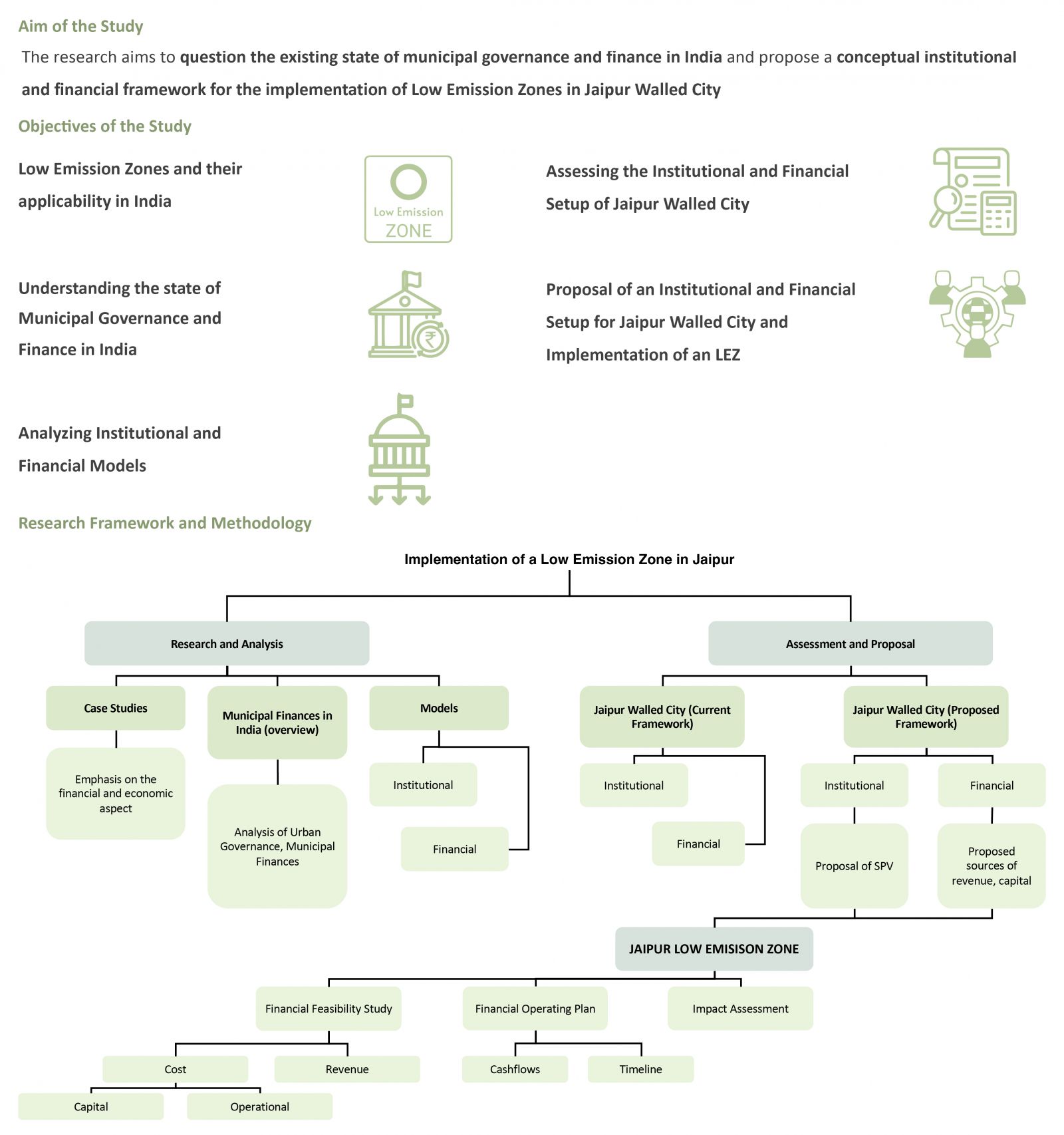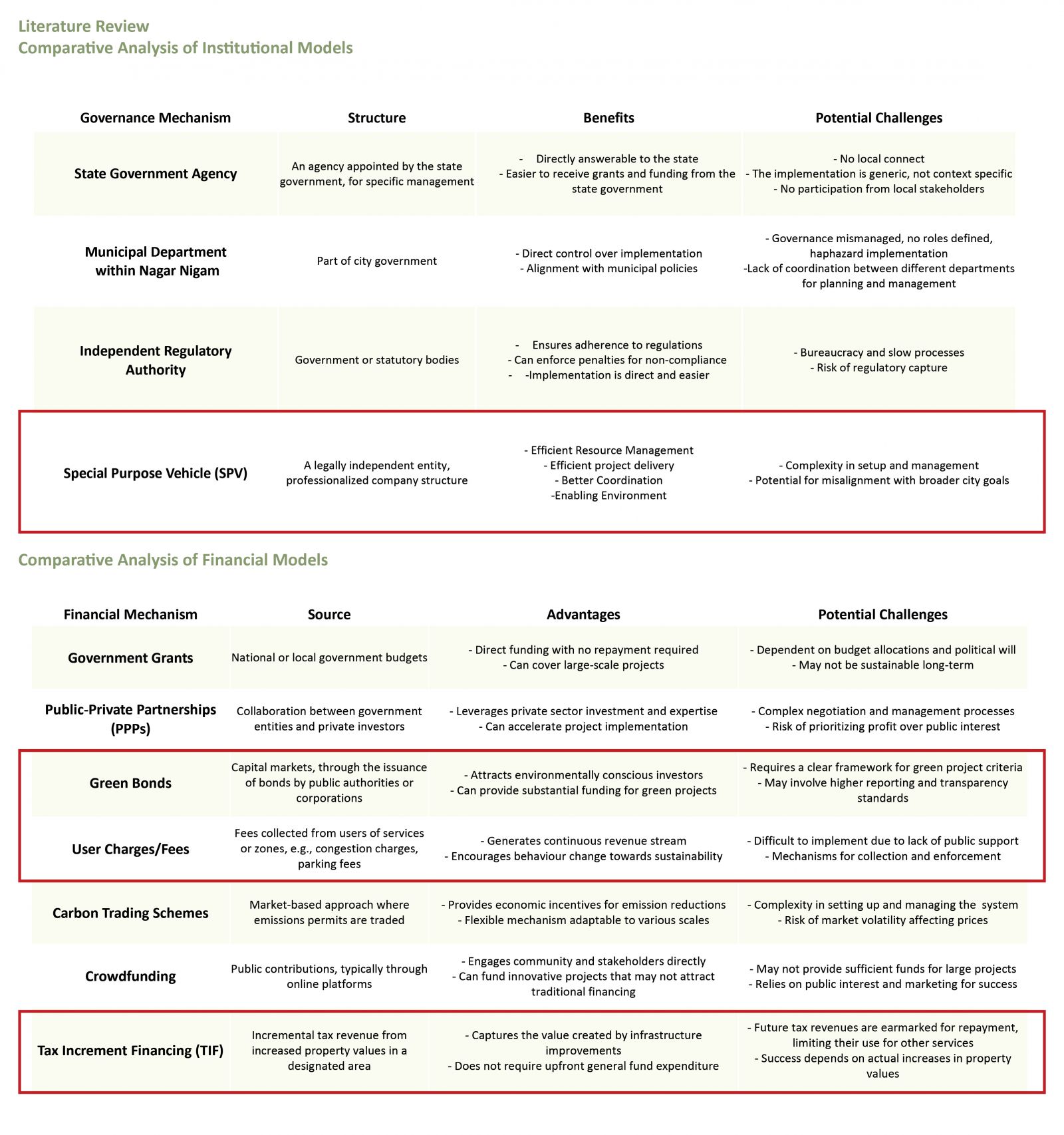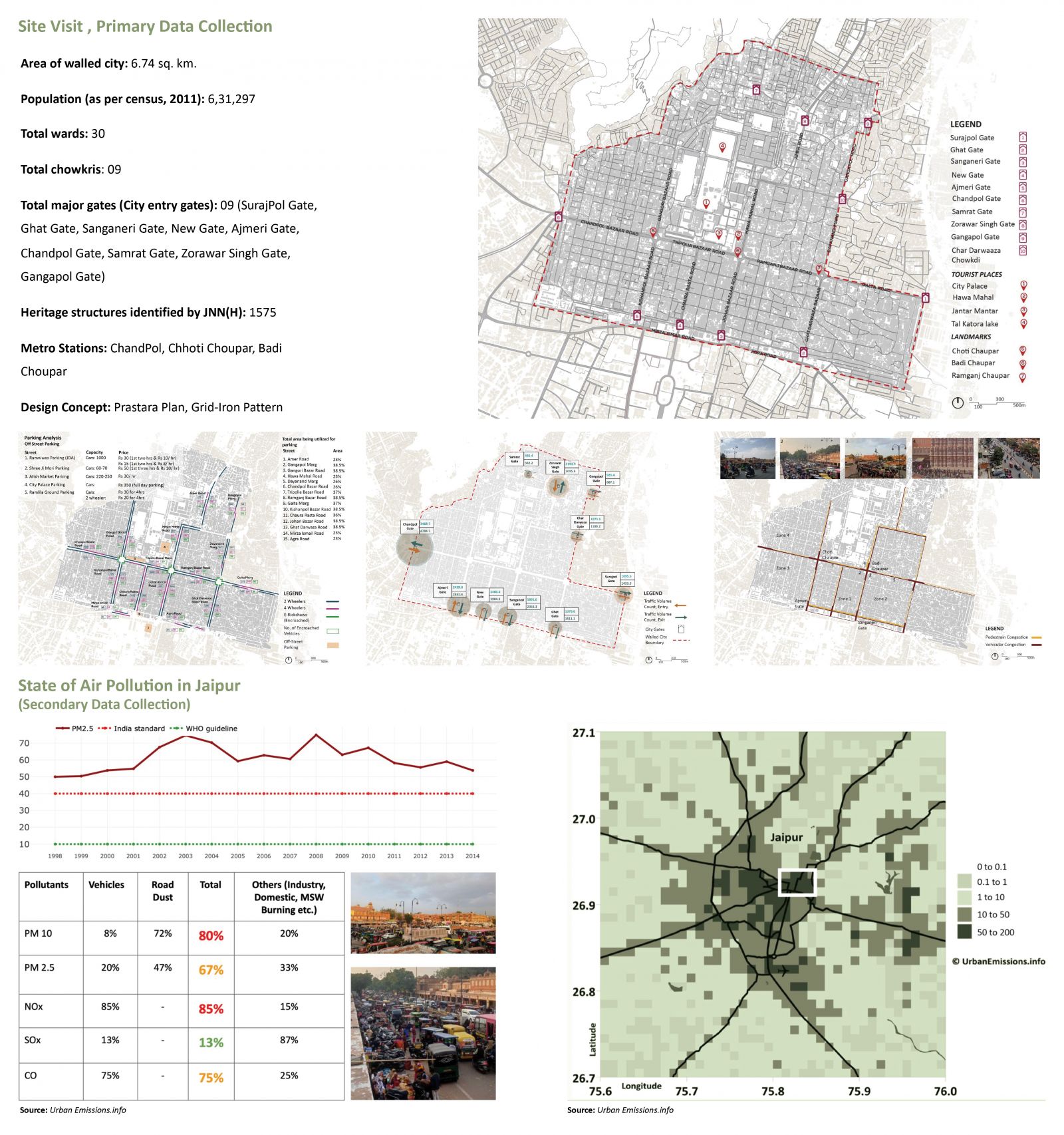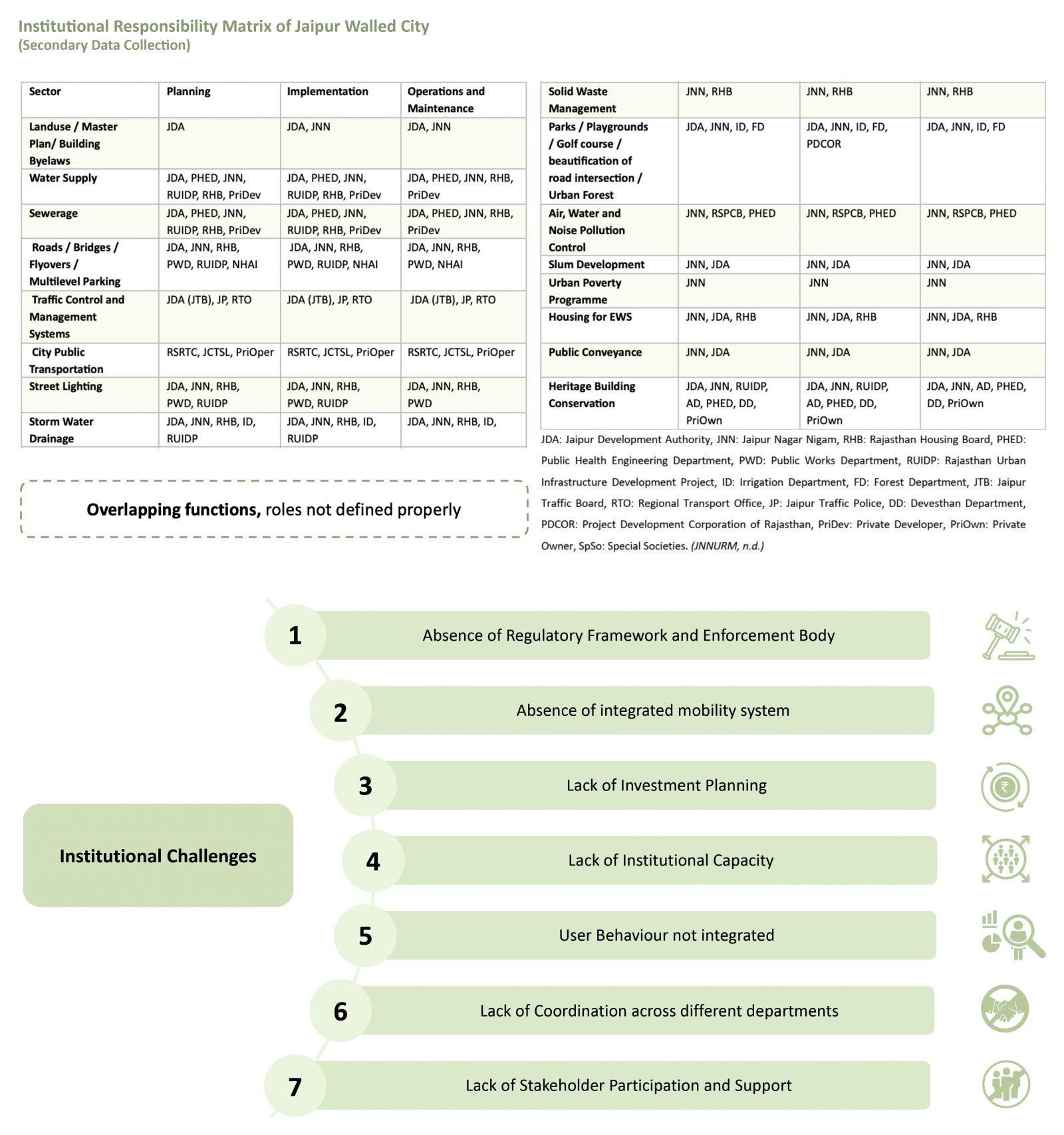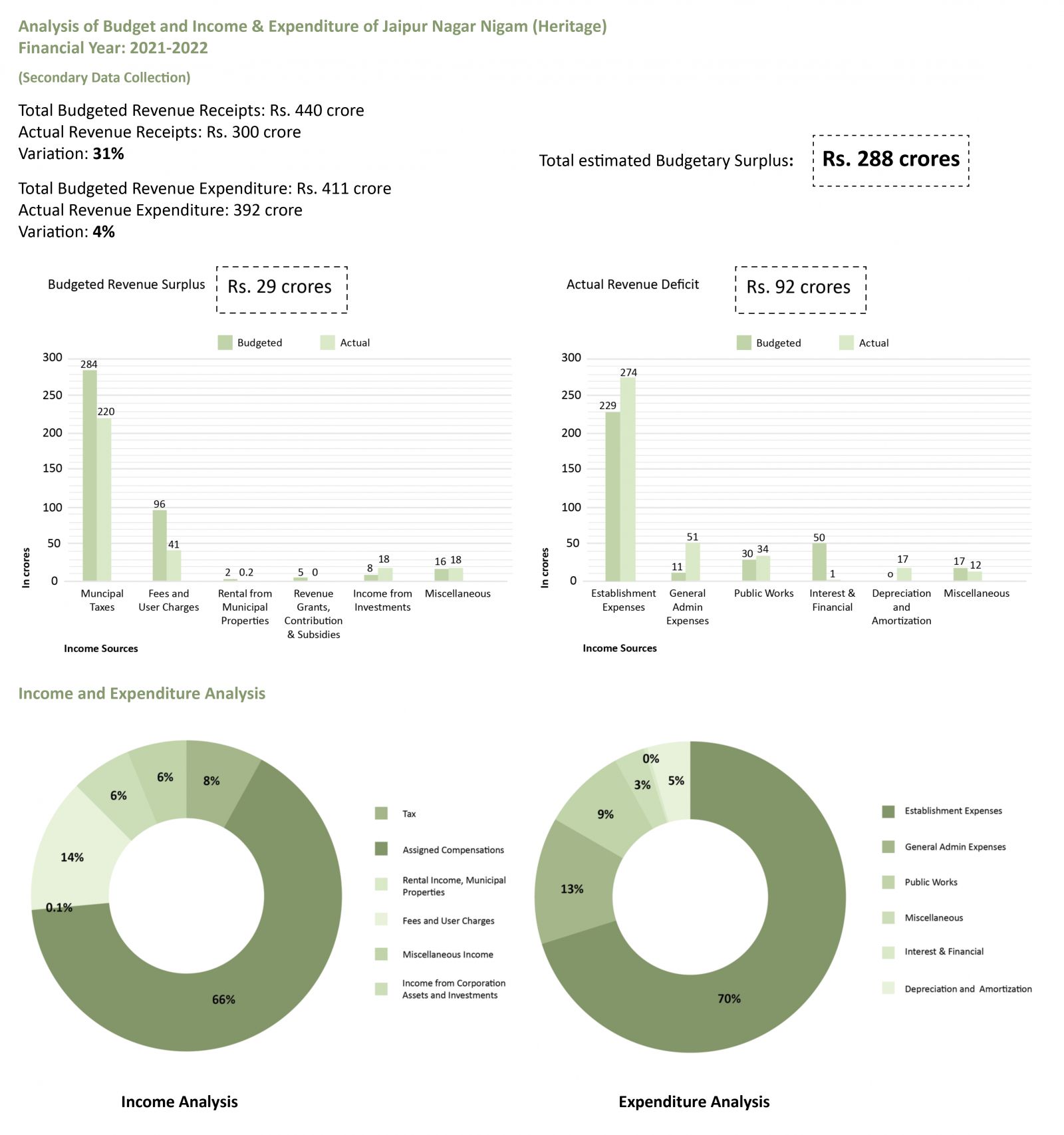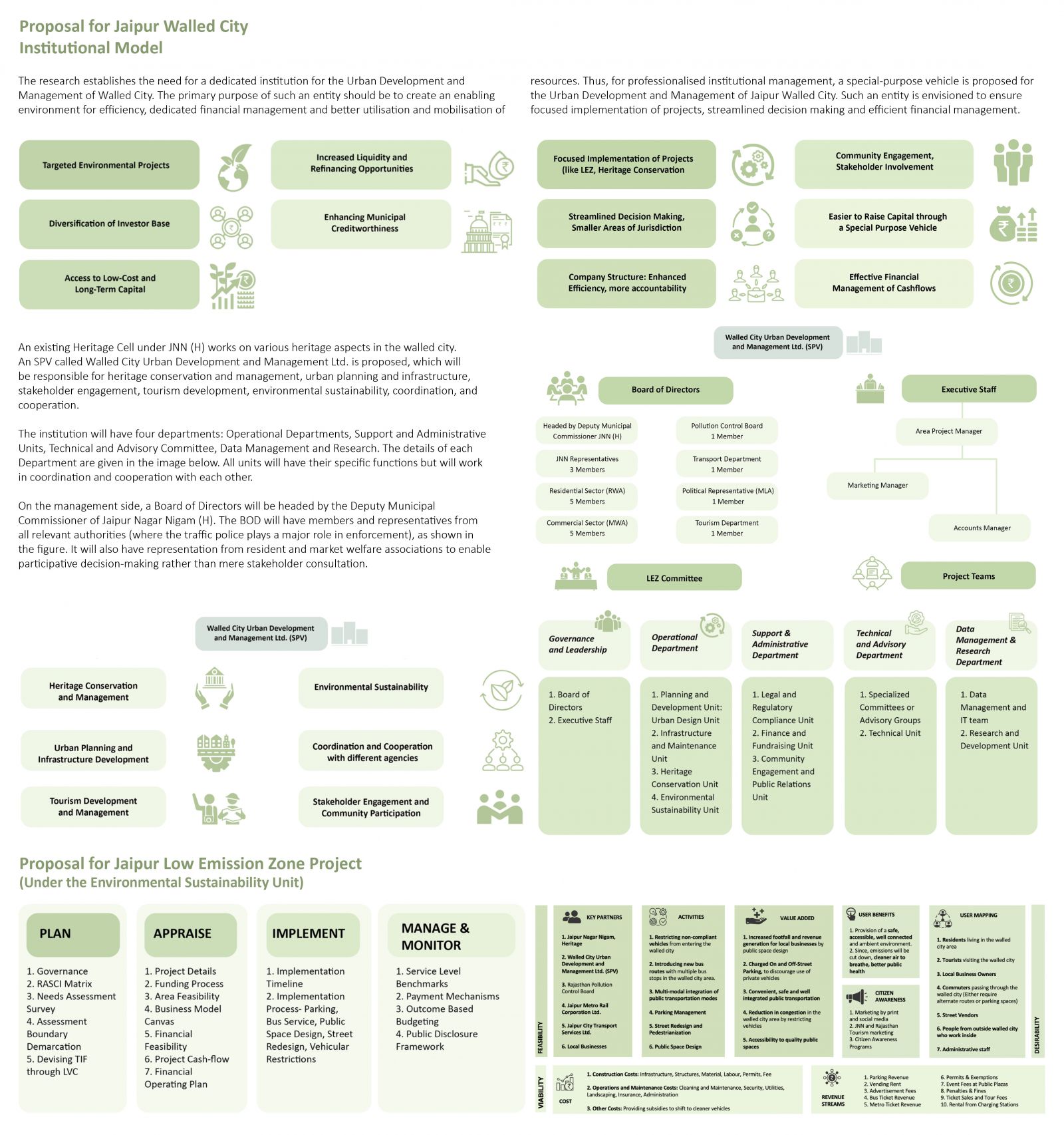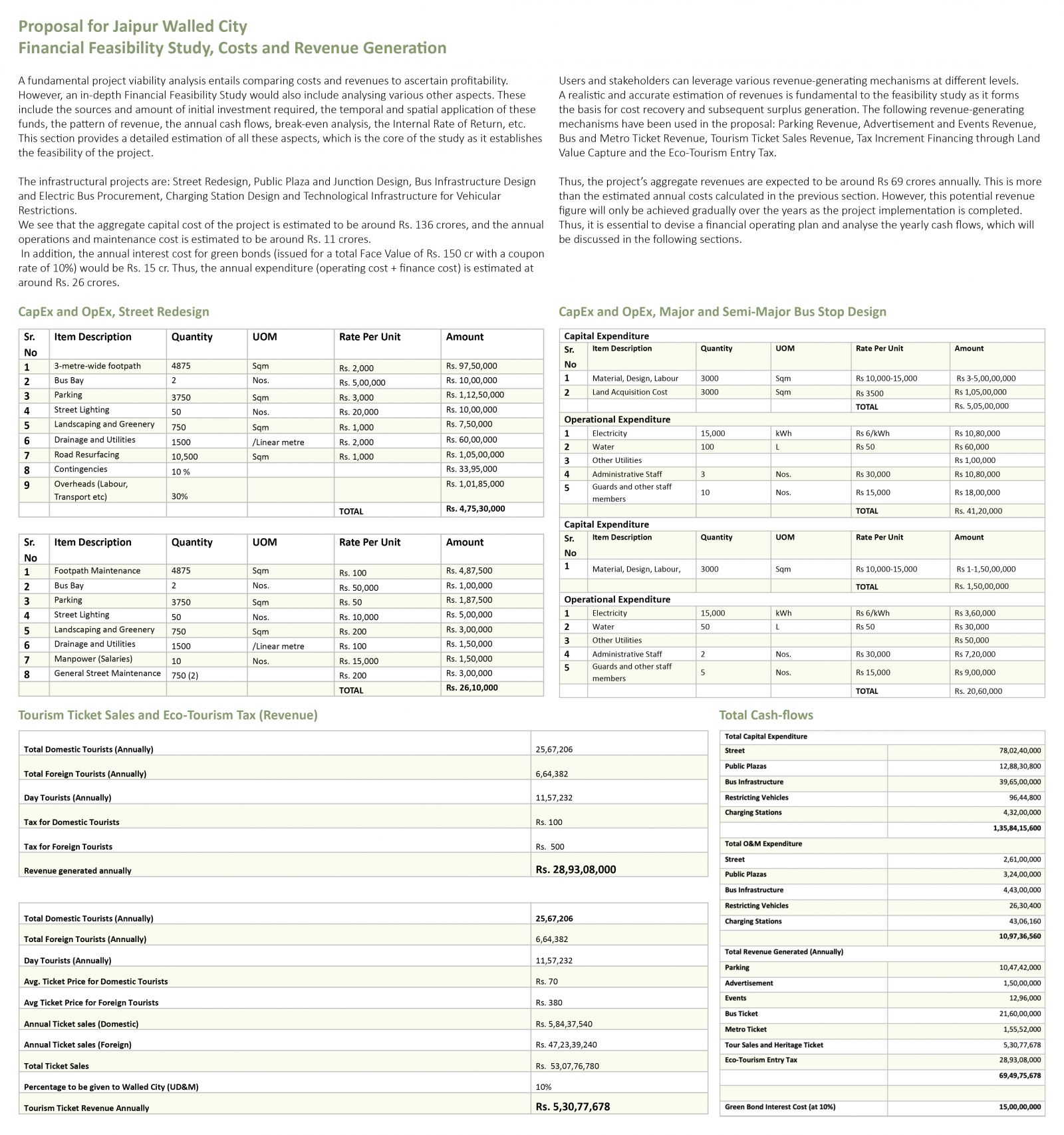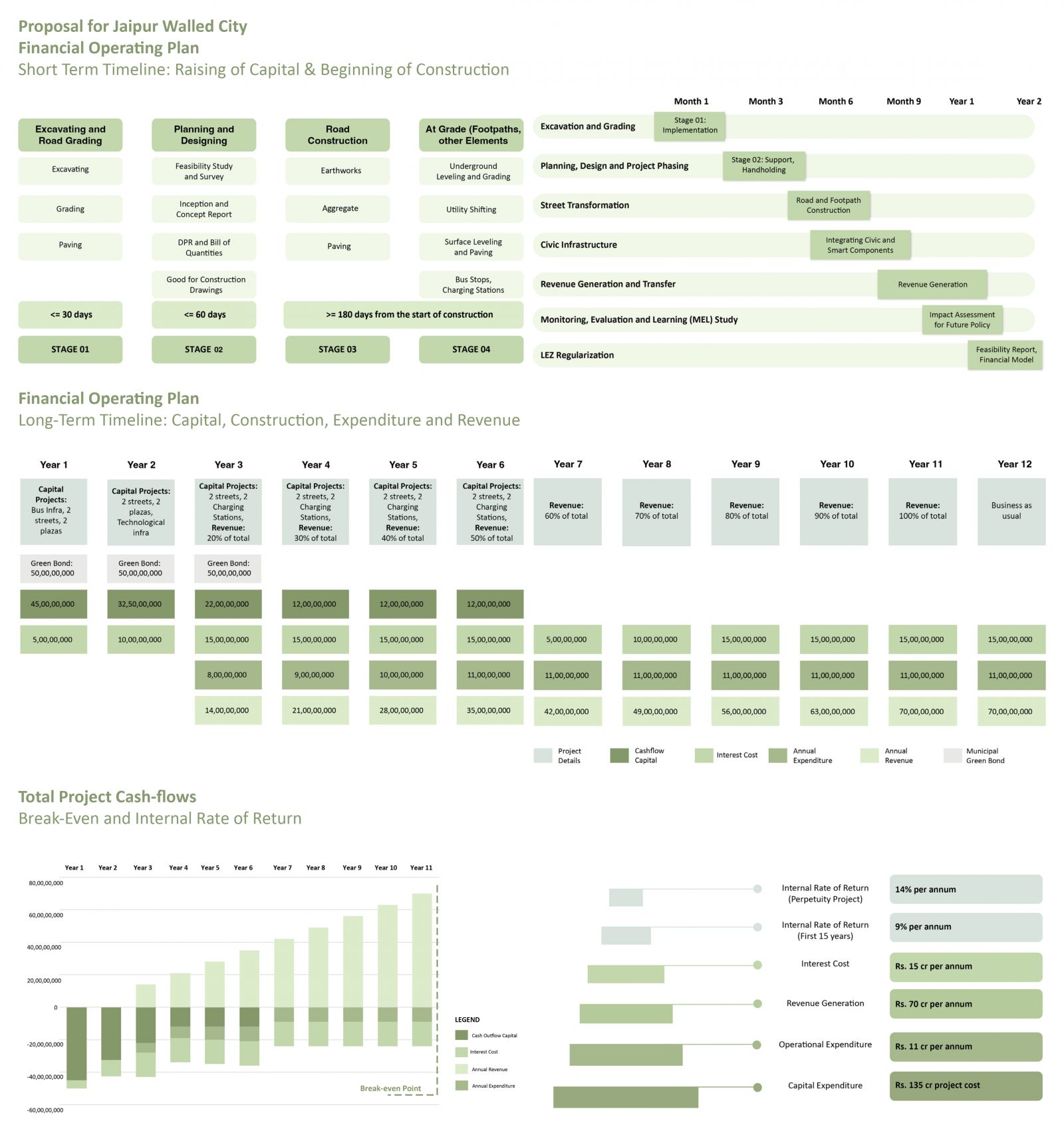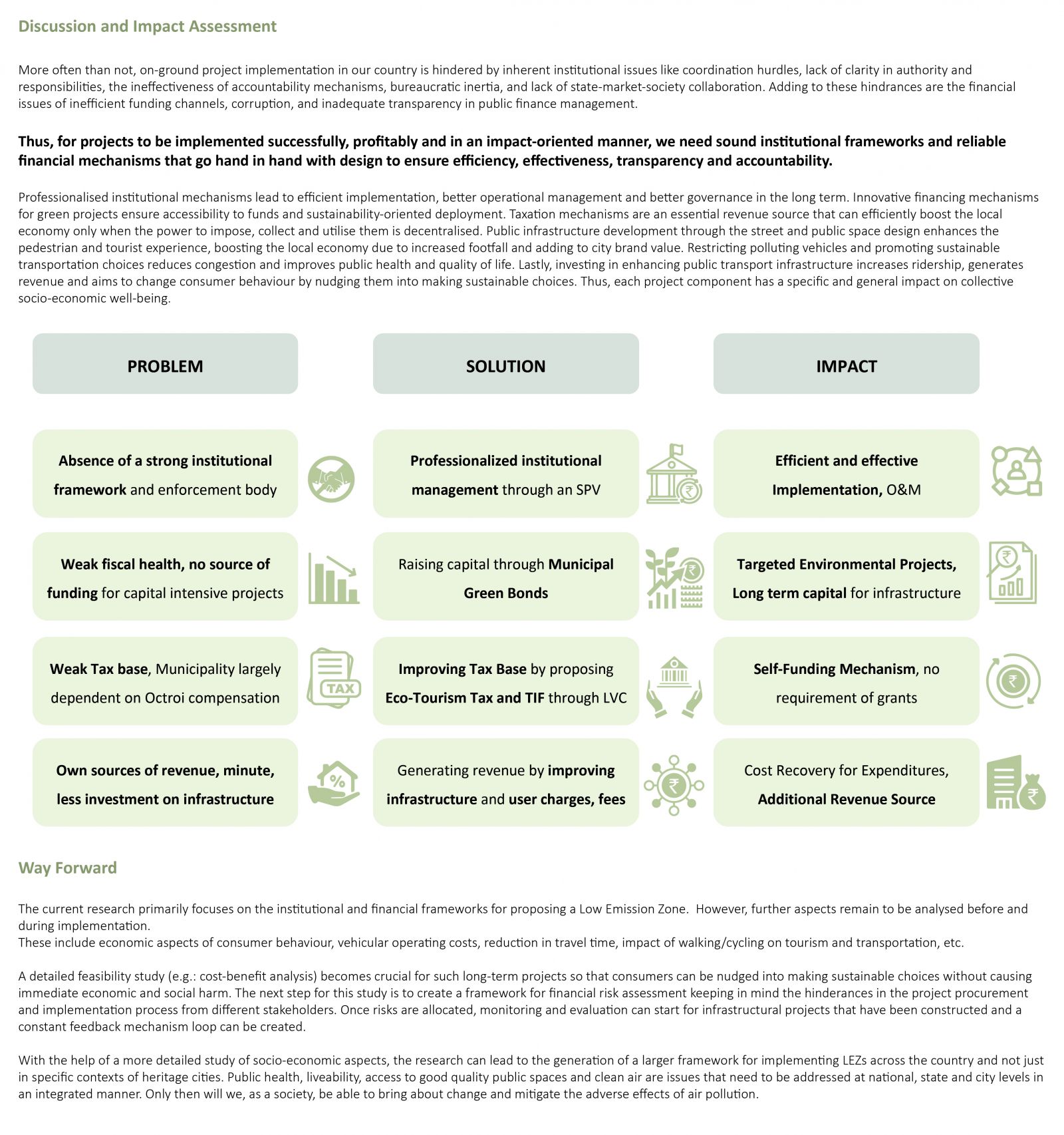Your browser is out-of-date!
For a richer surfing experience on our website, please update your browser. Update my browser now!
For a richer surfing experience on our website, please update your browser. Update my browser now!
The research aims to propose a conceptual institutional and financial framework to develop urban design strategies for implementing low-emission zones in heritage cities, taking the case of Jaipur. The study will focus on understanding and analysing the existing policies and financial framework of Jaipur's transportation and mobility sector, collecting data on different funding and institutional mechanisms implemented worldwide, and recommending strategies to tackle the issues. The study is formulated by qualitative data analysis through an extensive literature review of the city’s financial models, sources of revenue, economic standing and the role of different departments in the urban sector.
